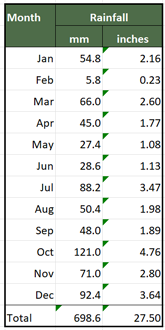Monday wasn't a bad day, dry and reasonably mild after a rather cool start to the day.
You’ll know if you read yesterday’s blog that we visited Clumber Park on Sunday. We’d both taken lots of photos of chaffinches feeding from seed left on the old tree stumps. It was only when we got back home and downloaded our pictures that we noticed something odd about some of the chaffinches.
Some of the chaffinches were fine as you can see from the above picture. But that wasn't the case for all of them. Look at the legs of this chaffinch in the picture below.
He’s got really clumpy legs and feet. Looking at our pictures quite a few of the chaffinches both male and female, (and a blue tit), were suffering from this condition. It didn't seem to bother them too much and their behaviour wasn't obviously any different from the fit and healthy birds. I've never noticed this on any of our garden birds so I had a look on the RSPB web site to see if this problem was identified.
Judging from information on the RSPB web site I think the birds probably have Chaffinch Viral Papilloma or CVP.
This is the reply to a similar query to the RSPB and the full response can be found here.
CVP is thought to affect around 1% of the chaffinch population at any given time and can affect both sexes. Cases usually occur in clusters and quite high proportions of local populations may be affected in outbreaks.
As you've seen, the disease causes wart-like growths on the foot or tarsometatarsus (the bare part of the leg) and usually, but not always, only one leg is affected. The growths vary from small nodules to large irregular shaped and deeply-fissured masses which almost engulf the entire lower leg and foot and which can distort the toes. Affected birds usually seem in otherwise good health but some may show signs of lameness and hop mainly on the unaffected foot and digits may be lost. The warts, similar in structure to those in mammals, grow slowly in the keratinised layers of skin and may progress over many months.
The fact that cases occur in clusters suggests that the presence of affected birds presents a risk to others that are susceptible. The mode of transmission is not known but it seems likely that the virus may be spread via surfaces the birds stand or perch upon or by direct contact.
Even birds with large papillomas often appear to behave normally so, in some cases, the growths may be little more than an inconvenience and relatively minor irritation. However, lameness is sometimes observed and this clearly indicates pain. In some cases these tumours may regress, but in serious cases death is unfortunately inevitable.
No treatment can be administered to birds in the wild, because it is impossible to ensure adequate dose for the infected individuals and prevent healthy birds picking up the medicine. Some drugs that will cure one species can be lethal to others.
The most effective method to avoid cross-transmission would be to practice good, regular hygiene at your feeders and take steps to minimise crowding at perching or feeding sites.
We don’t get a large number of chaffinches in the garden but I guess it is a reminder to keep feeders as clean as possible. We certainly don’t have chaffinches queuing up at feeders unlike starlings and house sparrows.




























When we visited the International Centre for Birds of Prey the owner said that the best thing we could do for wild birds was to regularly pour boiling water over bird tables. I've always remembered her words, because it's not a message that gets out regularly. A shame to see this infection spreading.
ReplyDeleteThanks for the tip CJ. A nice easy job for the bird tables. Our feeders do get cleaned and disinfected but probably not as often as they should be.
Delete